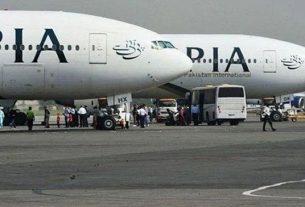At least 100 protestors are facing the death penalty in Iran, says a rights group.
Norway-based Iran Human Rights said this week that 100 protestors — including teenage boys and two 22-year-old women — are currently at risk of execution for participating in demonstrations sparked by the death of Mahsa Amini in September.
The organisation warned that this figure is a “minimum” as most families are under pressure to stay quiet about the fate of their loved ones.
The real number is believed to be much higher, it added.
Iran is currently gripped by the largest wave of anti-government unrest in its recent history.
Protests began on 16 September with the death of 22-year-old Mahsa Amini, after she was arrested by the morality police for allegedly not wearing her headscarf properly.
But demonstrations soon morphed into a wider challenge to Iran’s Islamic government, which is deeply unpopular among large swathes of the population.
Many of those facing execution are accused of Efsad-fil-arz — which means “corruption on earth” — a loosely defined term that Iranian courts often use to justify executions.
Members of Iran’s Kurdish and Baloch minorities make up a significant proportion of those condemned to death.
Five women are at risk of execution, according to Iran Human Rights.
One is Mahsa Mohammadi, a 22-year-old microbiology student who was arrested for a tweet. Another woman of the same age, Bita Haghani, has also been sentenced to death over charges of Efsad-fil-arz.
In cases where they had managed to make contact, Iran Human Rights said all defendants had been subjected to “physical and mental torture to force false self-incriminating confessions”.
Activists have reported that female inmates are being systematically raped and sexually assaulted by security forces inside detention centres across Iran, with some committing suicide after their release.
“The Islamic Republic is intentionally creating confusion in protester cases by sharing contradicting statements, particularly in death penalty cases,” said Iran Human Rights in its press release.
It added that there is ambiguity around how many people are facing the death penalty because defendants cannot access lawyers and have limited family contact.
“Despite more than 100 days passing since the start of the nationwide protests, hundreds being killed, thousands arrested and protesters being executed, the people’s uprising for real change and achieving fundamental rights continues,” said Director Mahmood Amiry Moghaddam.
Two men, both 23, were executed in December after what were described by activists as secretive sham trials.
One of them, Majidreza Rahnavard, was hung in public for allegedly killing two members of the paramilitary Basij force, which has been at the forefront of the state’s violent crackdown.
A pro-government news agency published a collage of images of Rahnavard hanging from a metal crane, his hands and feet bound, a black bag over his head.
The other executed man was Mohsen Shekari. He was the first protestor to be sentenced to death as a direct result of the 2022 Mahsa Amini protests.
His execution drew immediate condemnation from human rights groups who said it would catalyse a flurry of state executions.
Authorities have portrayed the protests as “foreign-backed riots” and responded with deadly force.
According to Iran Human Rights, at least 476 people have been killed by security forces in the nationwide protests so far.
This number includes 64 children.__EuroNews





